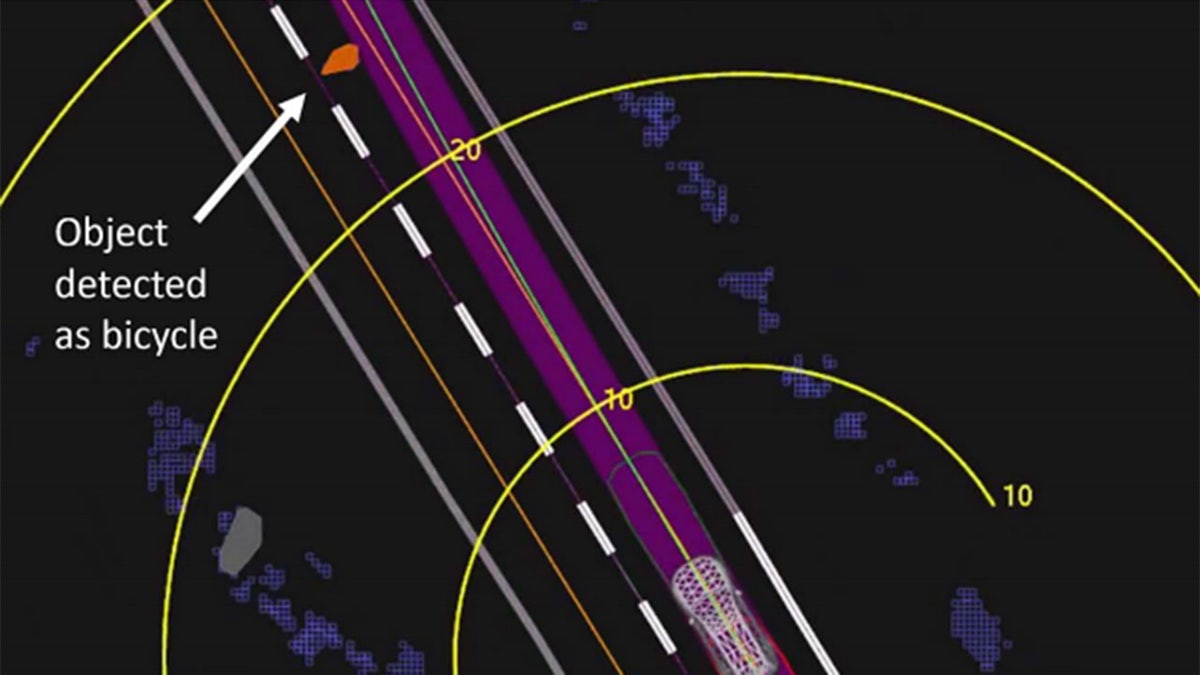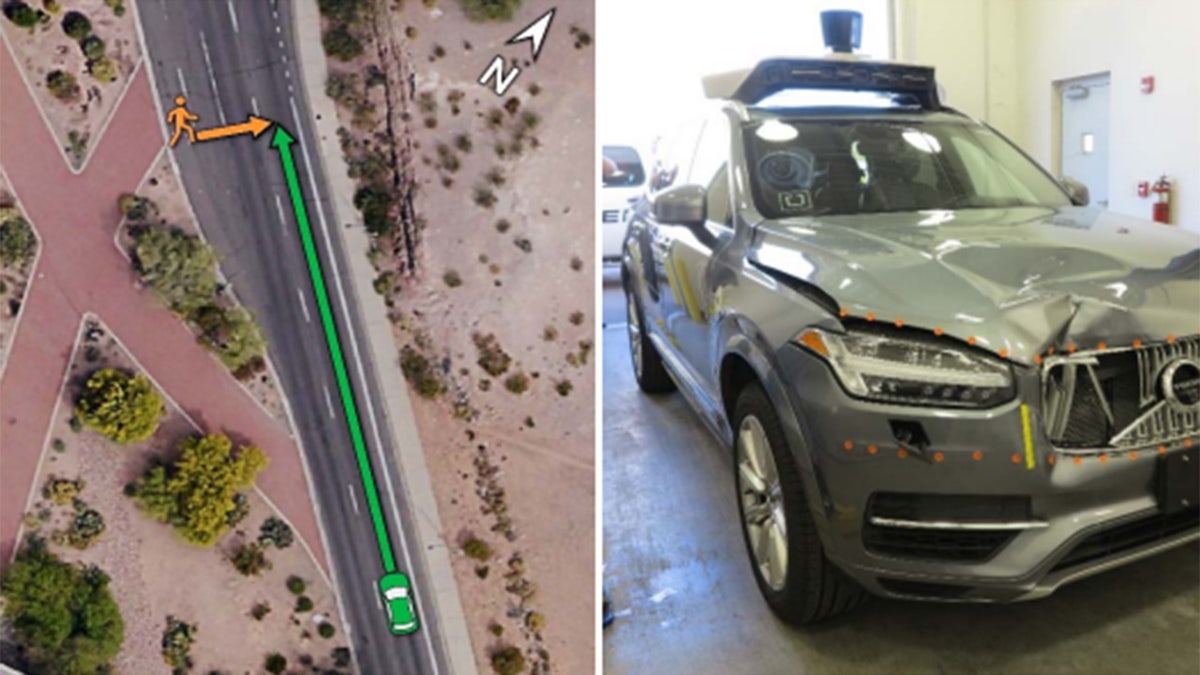Dashcam catches the moment self-driving Uber hits pedestrian
Raw video: Cameras mounted inside the car catches the fatal moment. Authorites are investigating the cause of the crash.
The self-driving Uber SUV that struck and killed Elaine Herzberg in Tempe, Ariz., in March picked her up on its sensors six seconds before it hit her, but did not determine that it needed to stop or evade her until it was too late, according to federal investigators.

(NTSB)
Herzberg was jaywalking her bicycle across a four-lane section of road on the night of March 18 when the Volvo XC90 SUV ran into her. A preliminary report on the accident from the National Transportation Safety Board issued on Thursday said that a review of the data from the car shows that it first identified her as an unknown object, then as a vehicle and finally as a bicycle. Just 1.3 seconds before impact the computer decided that it needed to initiate an emergency braking maneuver, (defined as deceleration greater than 6.5 meters per second squared,) but the function had been disabled in the prototype system to reduce erratic driving behavior.

(NTSB)
Alain Kornhauser, faculty chairman of autonomous vehicle engineering at Princeton University, told the Associated Press that Uber likely determined in testing that its system braked in situations it shouldn't have, possibly for overpasses, signs and trees. "It got spoofed too often," Kornhauser said. "Instead of fixing the spoofing, they fixed the spoofing by turning it off."
The NTSB said that the system was also not programmed to alert the backup driver in the vehicle to the emergency, and that it was up to her to take action in this type of situation. In-car video shows that the driver, Rafaela Vasquez, was looking down at what she told the NTSB was the “self-driving system interface” until she looked up and saw what was about to happen. The vehicle’s record of the event indicates that Vazquez grabbed the steering wheel less than a second before the car ran into Herzberg and hit the brakes after the impact.
The Volvo XC90 has its own pedestrian-detecting automatic emergency braking system, but it is turned off when the vehicle is under the control of Uber’s self-driving system.
The NTSB also said that Vasquez showed no signs of impairment at the time of the incident, but that Herzberg had methamphetamine and marijuana in her system.
The preliminary report does not attempt to suggest conclusions about probable cause, according to the agency. It was released a day after Uber announced that it was permanently shutting down its self-driving car operations in Arizona, after suspending them nationwide in the wake of the accident, but that it planned to resume them in Pittsburgh sometime later this year.
